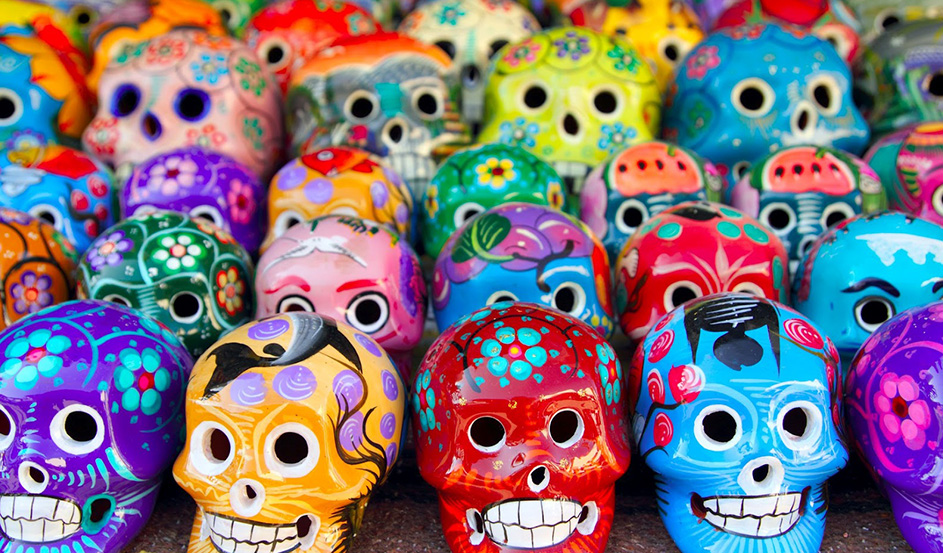
MEXICO: AN UPDATE
Ahead of our next concept due for launch in late September, we have been researching Mexico in all its gastronomic, cultural and artistic glory, from the very old to the most cutting edge. All in aid of giving our guests a wonderful taste of Mexico!
I am just about to travel to Mexico for a month in which I will be immersing myself into local food culture and learning all there is to know (or at least as much as I can retain!) about the cuisine of Mexico. But before I do; for those of you who are interested in how we develop our concept frame works; here is a brief summery of some of the main areas which will be highlighted in this concept come September!
One of the most unique points about Mexican cuisine is that it recently joined a very exclusive list; Mexican food took its place along with Japanese Washuko on the UNESCO List of the Intangible Cultural Heritage of Humanity.
UNESCO on Mexican Cuisine
Traditional Mexican cuisine is a comprehensive cultural model comprising farming, ritual practices, age-old skills, culinary techniques and ancestral community customs and manners. It is made possible by collective participation in the entire traditional food chain: from planting and harvesting to cooking and eating. The basis of the system is founded on corn, beans and chili; unique farming methods such as milpas (rotating swidden fields of corn and other crops) and chinampas (man-made farming islets in lake areas); cooking processes such as nixtamalization (lime-hulling maize, which increases its nutritional value); and singular utensils including grinding stones and stone mortars. Native ingredients such as varieties of tomatoes, squashes, avocados, cocoa and vanilla augment the basic staples. Mexican cuisine is elaborate and symbol-laden, with everyday tortillas and tamales, both made of corn, forming an integral part of Day of the Dead offerings. Collectives of female cooks and other practitioners devoted to raising crops and traditional cuisine are found in the State of Michoacán and across Mexico. Their knowledge and techniques express community identity, reinforce social bonds, and build stronger local, regional and national identities. Those efforts in Michoacán also underline the importance of traditional cuisine as a means of sustainable development.
The Background
Mexican cuisine reflects the country. Deep in Mexico’s core lies the spirit of its pre-Hispanic peoples. Earthy and indomitable, they shaped the culture of the country. For thousands of years before the Spanish discovered Mexico, the native Aztecs lived off the fresh produce off the land which consisted mainly of corn and breads made of corn flour, beans, varieties of cactii such as nopales (a flat cactus), root vegetables such as sweet potatoes and jicama also known as the Mexican potato, gourds or squashes such as zucchini, and scores of different chillies to spice up their meals.
Wild game played an important culinary role in pre-Hispanic Mexico. Although the Aztecs, Maya and other Mesoamerican people relied on corn as the staple food, along with a wide variety of fruit and vegetables, the carbohydrate-rich diet was supplemented by animal protein. The Aztecs had only five domesticated animals, the turkey, the duck, the dog, the bee and the cochineal insect (the last being a source of dye, rather than food) and variety was provided by several species of edible game, including deer, peccary, rabbit, armadillo and possum, among others.
That wild game continued to flourish in Mexico at least during the post-Conquest period is proven in a description of a hunt held by the Spanish Viceroy, Mendoza, in Central Mexico in 1540, which states that thousands of animals, of many different kinds, were caught. Although population growth and expansion of urban areas has greatly reduced the numbers of wild game, hunting is still done on a limited basis, and at least one of the animals hunted in pre-Hispanic times has been domesticated.
When the Spanish came, saw, and conquered, they cast their own culture, their way of cooking like a gloss over the indigenous. Never quite assimilated, the Spanish elements still have sheen, but the power of Mexico remains in its pre-Hispanic heart. The Spanish did not alter Mexican food, they brought new ingredients which expanded its potential, and added luster to what existed. The Mexican cuisine that developed through this fusion is subtle, complex, nutritious, and ranks as one of the great cuisines of the world.
Reflecting the larger culture, the underpinning of Mexican cuisine lies in the indigenous. The native peoples developed highly sophisticated cooking techniques to utilize a dazzling array of native food.
Today, corn, beans and chillies, referred to by Mexican cooks as the Holy Trinity, continue to dominate traditional Mexican cuisine. Corn has been a staple food for Mexicans for thousands of years. Flour made from processed, hulled corn kernels is used to make tortillas which forms the basis for many of Mexico’s most well-known dishes: enchiladas, tacos, tortilla chips etc. Chillies and pinto beans are central to every meal.
However, some ingredients that we now associate with Mexican food were unknown in Mexico till the sixteenth century – rice, wheat, beef, goat, lamb, chicken, olive oil, spices and herbs like cinnamon, cloves, parsley and coriander or cilantro, milk and cheese were introduced to Mexico by the Spanish whose forays into Mexico changed the character of Mexican food and indeed world cuisine forever.
Some unique flavours and ingredients one is likely to encounter in traditional Mexican food are bitter chocolate or cocoa in savoury sauces; epazote (Mexican tea) a pungent herb used to flavour beans; annatto the seeds of the achiote tree, which provides an earthy flavour and orange colour to dishes; and nopales or pads of the prickly pear cactus which is cooked as a vegetable or added to stews. Mexican cheeses are unique to that country with fresh cheeses, such as queso fresco, panela and asadero being the most popular. Some cheeses are purely Mexican in origin: Oaxaca, Cotija, and Chihuahua and the Mexican version of manchengo made with cow’s milk.
And it just doesn’t seem right to talk about Mexican cuisine without mentioning insects, a culinary delicacy in this part of the world since ancient times. The notion of insect eating (entomorphagy) has become more focused on since a 2013 report by the UN Food and Agriculture Organization found that eating insects could be a more sustainable food option that would help boost nutrition and reduce pollution, globally!
References:
http://cookeryplusmag.fourplusmedia.com/?page_id=1107
Seasonal Dining: Mexican Wild Game – Part Two: Rabbit and Venison
http://www.unesco.org/archives/multimedia/?s=films_details&pg=33&id=1674

